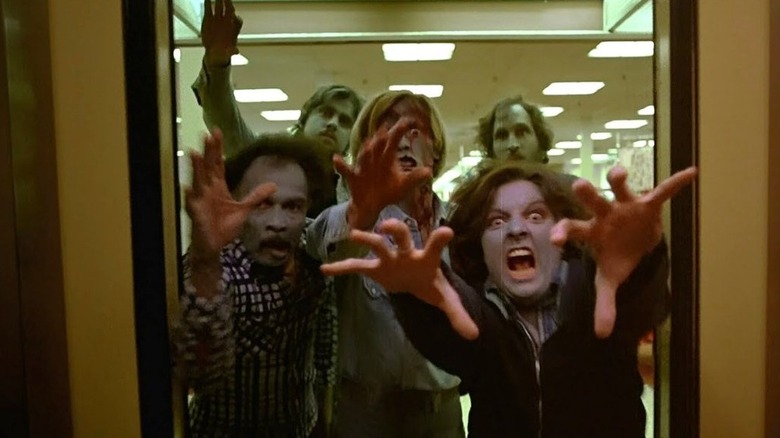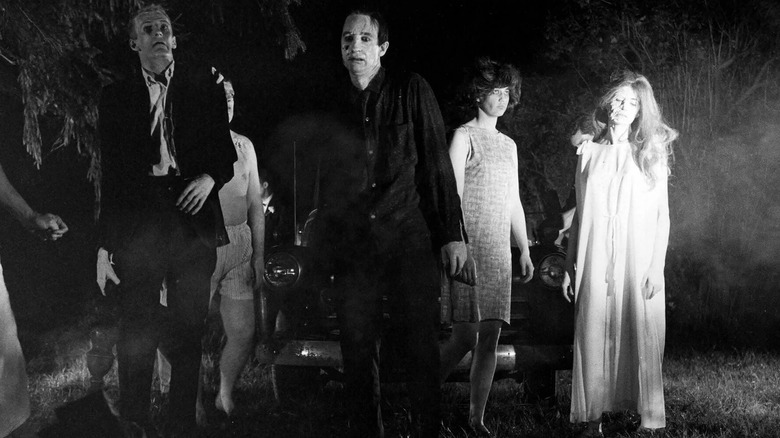George Romero Had To Reinvent His Visual Style Going Into Dawn Of The Dead
Not every filmmaker can brag that they invented a whole new genre, but George Romero could. When you think of a zombie movie, a certain set-up assuredly comes to mind: a horde of ravenous undead who can only be killed with a bullet to the brain chasing after a small group of misfits making it through the remnants of society. This set-up originates with George Romero's "Night of the Living Dead." Subsequent zombie media all go back to Romero's filmography, whether they're remaking it (Zack Snyder's "Dawn of the Dead"), homaging it ("The Walking Dead" comics/TV series), or parodying it ("Shaun of the Dead" and "Return of the Living Dead").
Romero continued to make zombie films throughout his life, but even so, he didn't regurgitate himself. His films had a satirical edge his successors often lack and his zombies were always a flexible metaphor. In "Night of the Living Dead," the group of survivors is still unable to put aside racial tension even when faced with the threat of the undead. In "Dawn of the Dead," the zombies all group at the mall — consumerism is bringing us halfway to being zombies already.
To reflect the different themes, Romero was sure to give these two movies very different aesthetics.
From black and white to color
Shortly after the U.S. release of "Dawn of the Dead" in 1979, Romero sat down for an interview with Roger Ebert. The filmmaker and critic discussed how the latter's filmmaking changed from "Night" to "Dawn." For "Night," Romero wanted to experiment as a director, recounting, "At the time we did 'Night,' I was a director of television commercials. Some of them cost a lot more than our whole movie. They were very slick, sophisticated ... we wanted the opposite look for 'Night.' We wanted it to look like a newsreel."
The sparse black and white of "Night of the Living Dead" fit its setting as well. Most of the film takes place in an isolated farmhouse, and the bare essentials of the cinematography complement that. The harsher shadows of black and white also make the "ghouls," as they're called, look even creepier. However, since "Dawn" was set in an exurban mall, Romero decided that it should look like a commercial, not a newsreel:
"With 'Dawn,' I wanted the slick look, I wanted to bring out the nature of the shopping center, the retail displays, the mannequins. There are times when maybe you reflect that the mannequins are more attractive but less real — less sympathetic, even — than the zombies. Put those kinds of images side by side, and you raise all sorts of questions."
Romero proves that even when directors work in the same genre, there are still ways to mix things up and grow as an artist along the way.

